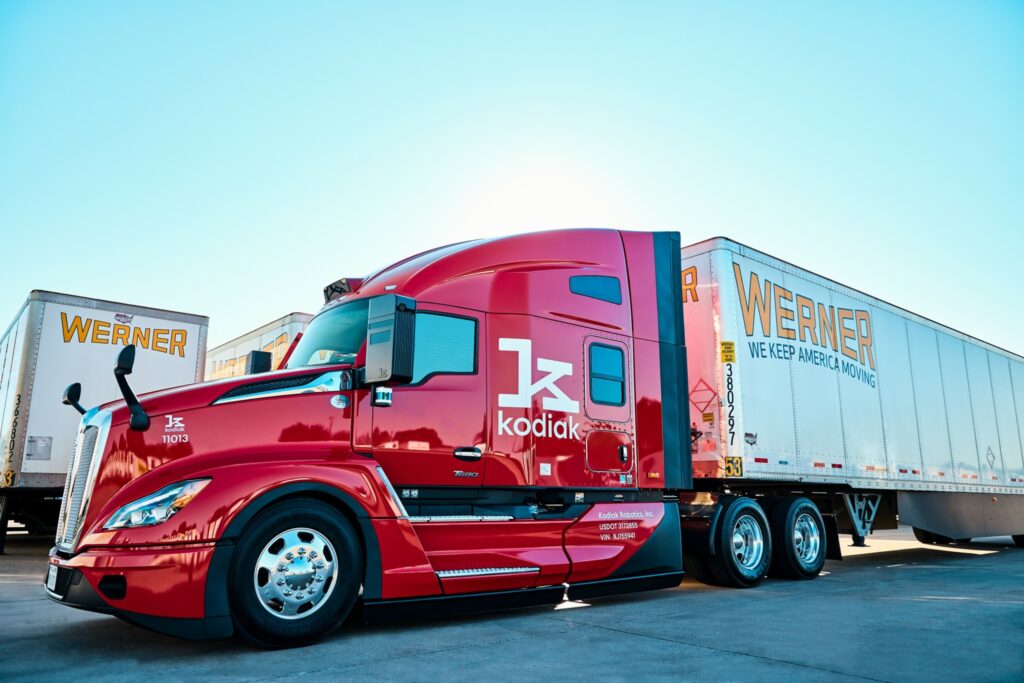One in five trucks in U.S. could be autonomous by 2034: Roland Berger
Global consulting firm Roland Berger believes that by 2034, 20-30% of trucks on American roads will be autonomous. But to get there, fleet operations and relationships with OEMs will have to evolve.
Wilfried Aulbur, senior partner with Roland Berger, gave an update on autonomous trucks at FTR’s 2023 Transportation Conference. Fleets will be motivated to automate driving to cope with a driver shortage, to improve safety and to avoid nuclear verdicts, he said. They’ll also need to see cost reductions and/or efficiency improvements.

But automated driving won’t be a solution for every application or region. There are three models where autonomous driving could make sense, he said: platooning, where the lead driver in a convoy performs the driving and the following driver can rest; dock-to-dock autonomy, where driverless trucks travel from one dock to another across the country; and a transfer hub model where human drayage drivers manage the first and final miles, and the autonomous truck performs the rest of the journey.
Platooning is the easiest to achieve, with the lowest payback. Dock-to-dock autonomy is the most challenging, but with the greatest benefits. The transfer hub model falls somewhere in the middle and may provide the best value, Aulbur said.
“It takes out the monotonous long-distance work for drivers, they get to be home at night. But you need a minimum distance of driverless driving for this to make sense and that is 200-plus miles,” he said.
This model could apply to about 38% of traffic, with drivers still required but ideally working in improved conditions where they’re home more frequently. While some regions such as California don’t allow autonomous trucks, Aulbur said “to be very frank, for the kind of rollout we want to see for the proving of the technology, we don’t need California. We can drive most of the I-10 and move goods with autonomous trucks. There are applications where we can start with autonomous technology even if we don’t have a homogenous solution across the country.”
The technological readiness of the OEMs is another challenge that must be met to make autonomous trucking a reality. Aulbur said the autonomous trucks being developed today have already proven an ability to safely merge, overtake vehicles and depart highways.
“The main focus now is to prove that we are in fact safer than an experienced driver,” he said.
Fleets will also have to be prepared to change their operational models.
“We have to either invest in transfer hubs or figure out how they operate and figure out what this means for our customers,” said Aulbur. “It’s nice to have a truck that runs 24/7 but it doesn’t help you if you don’t know what to do with a trailer at the warehouses.”
New pricing models will also be likely. Aulbur said OEMs will not only sell or lease the truck, but also charge for the hardware and software required, and probably even a surcharge for every mile driven autonomously. He said this model has already been adopted in agriculture. John Deere offers an autonomous tractor where “You pay for the tractor, the sensors, you pay for the software, then you pay for every acre you plow in autonomous mode.”
For that to make sense to a fleet, the cost savings will have to be substantial. And they will be, Aulbur contended, in an application with high drayage efficiency where the savings could total 28% compared to operating manned trucks.
Noel Perry, chief economist for Truckstop.com, said the drive to improve efficiency and road safety will usher in autonomous trucks.
“The real pressure for autonomy is not trucking, it’s people,” he said. “Trucks kill 5,000 people a year, most of which aren’t truckers’ fault. Thirty thousand are killed by us [motorists]. There is no AI program in the world that is on drugs, drinks or uses the cellphone while driving.”
He said the adoption of autonomous trucks will drastically change how trucks are utilized.
“If I tell you I’m going to halve the cost and double the service and you’re a supply chain manager, what are you going to do with that? It will revolutionize the way you handle that truck,” he said.
For instance, delivery companies will be able to use smaller trucks, since 53-ft. trailers are used today due to economies of scale, particularly when it comes to driver wages. The technology has the potential to rid cities of large trucks and 53-ft. trailers.
James Reed, chief operating officer with Kodiak Robotics, emphasized the push for autonomous trucks isn’t about displacing drivers, but improving their lifestyles.
“There’s no doubt drivers are getting older, there are fewer people coming into the driving profession, and the drivers in the profession are adopting different lifestyle choices,” he said. “They want to be home, to go to their kid’s soccer game. It’s inevitable there’s going to be a shortage of the right people at the right time, depending on what your target demographic is.”
Have your say
This is a moderated forum. Comments will no longer be published unless they are accompanied by a first and last name and a verifiable email address. (Today's Trucking will not publish or share the email address.) Profane language and content deemed to be libelous, racist, or threatening in nature will not be published under any circumstances.
That might be a good time to come out of retirement since our roads should be much safer after getting a lot of unskilled/poorly trained drivers off the road.